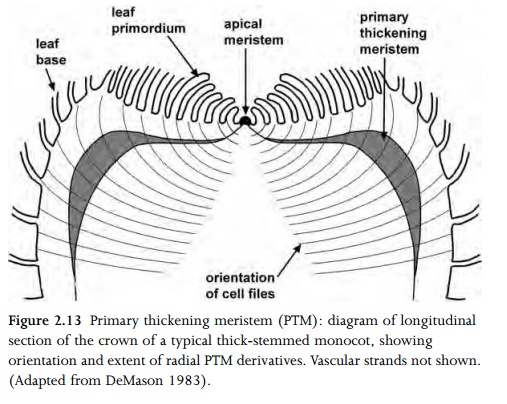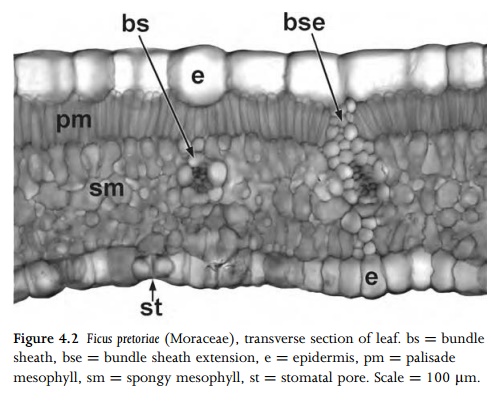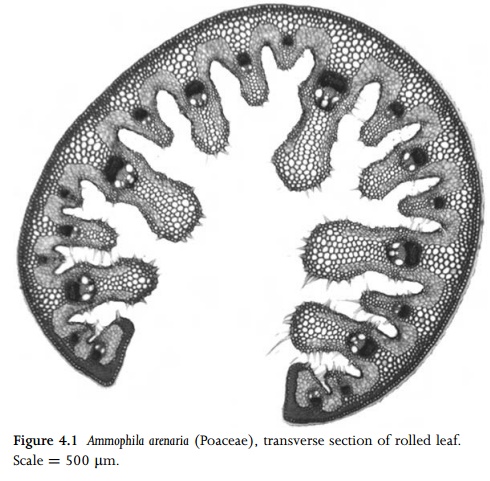Chapter: Anatomy of Flowering Plants: An Introduction to Structure and Development : Leaf
Bundle Sheath and Kranz Anatomy
Bundle Sheath and Kranz Anatomy
Most
minor vascular bundles in angiosperm leaves are surrounded by a bundle sheath
which extends even to the very smallest veins (Figs 1.13, 4.2). The
developmental origin of bundle sheaths differs; some (mestome sheaths) are
derived from procambium or vascular meristematic tissue; others are derived
from the ground meristem. The bundle sheath typically consists of thin-walled
parenchymatous cells, often in a single layer. Some monocots possess distinct
inner and outer bundle sheaths, the outer one being parenchymatous and the
(partial) inner sheath sclerenchymatous, forming a sclerenchyma cap that is
usually located at the phloem pole. In Aloe the outer bundle sheath is a specialized
tissue that is the source of aloin.


Grasses
possess either a single sheath consisting of an outer layer of thin-walled
cells containing chloroplasts, or a double sheath consisting of an outer layer
of thin-walled cells and an inner layer of thicker-walled cells. This is an
important taxonomic character in Poaceae, as double sheaths often occur in
festucoid grasses and single sheaths in panicoid grasses, though there are
exceptions. Leaves of many plants possess regions of

sclerenchyma
or parenchyma that extend from the vascular bundle sheaths towards either or
both epidermises. These bundle sheath extensions, which are termed girders if
they reach the epidermis, afford mechanical support to the leaf and are a
xeromorphic feature (Fig. 4.1).

Most
plants from warm temperate areas that possess the C4 pathway of
photosynthesis display a modified leaf anatomy that is termed Kranz anatomy
(Fig. 4.11). Kranz anatomy occurs in a few groups of both dicots and monocots.
It is characterized by elongated mesophyll cells that radiate from a single
layer of large parenchymatous bundle-sheath cells containing starch and
enlarged chloroplasts. This normally forms a second bundle sheath layer, though
in some grasses the primary vascular bundle sheath is itself recruited for this
purpose. C4 plants concentrate CO2 by photosynthetic
carbon assimilation in the radiating mesophyll cells, and subsequent
photosynthetic carbon reduction in the bundle sheath cells.
Related Topics